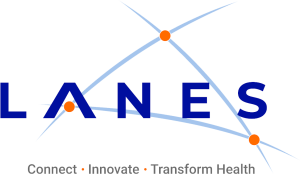Hospitals and health systems are heading into significant headwinds in 2026. But, instead of an additional “must do”, health and social care data sharing is a proven path to improve care outcomes and dramatically reduce unnecessary hospitalizations, decrease the burden on overwhelmed hospital clinicians and staff, and create a more sustainable system of health care. Its value is already delivering outcomes for early adopters.
Here are four ways hospitals are already using LANES as their QHIO to improve patient care efficiency and effectiveness, affordably.
1. Coordinate Post-Discharge Care Seamlessly. Transitions of care are one of the most vulnerable points in a patient’s journey. LANES ensures hospitals, primary care providers, behavioral health agencies, and community-based organizations all have access to the same real-time patient information. For example, Alta-Prospect Health System, a network of six Los Angeles County hospitals, used LANES to streamline referrals to community based organization (CBO) Partners In Care Foundation, ensuring patients received services like food support or transportation assistance more quickly. This helped prevent avoidable complications and unnecessary hospital returns.
2. Improve Operational Efficiency and Reduce Administrative Burden. Without centralized data, care teams spend significant time tracking down records, duplicating documentation, or manually coordinating referrals. LANES consolidates patient information into a single source of truth, improving intake workflows and freeing up staff time. When this information is available when and where it’s needed, providers and staff are able to spend less time on paperwork and phone calls, and more time on direct patient care.
3. Reduce Readmissions and Lower Total Cost of Care. When clinicians have real-time visibility into a patient’s medical and social history, they can make more informed care decisions, and intervene earlier. For instance, Alta-Prospect Health System’s ECM-eligible patients experienced a 68% reduction in inpatient utilization after implementing LANES-supported workflows—even as enrollment increased. This reflects improved continuity of care and fewer avoidable hospitalizations.
4. Support Whole-Person and Population Health
LANES provides a comprehensive view of each patient, integrating physical health, behavioral health, and social care data, including access to information from over 30 behavioral health clinics and community service organizations.
Data sharing is the path for health systems to create their own tailwinds. When health systems can identify high-need and high-utilizer patients, have targeted care plans and the resources to execute them, and are able to support the root causes of poor outcomes, they have the opportunity to drive better care experiences for patients and stronger value-based performance.
Learn more about how Alta-Prospect Health System uses LANES to improve care and outcomes.

